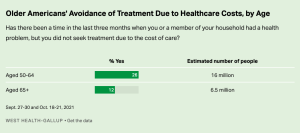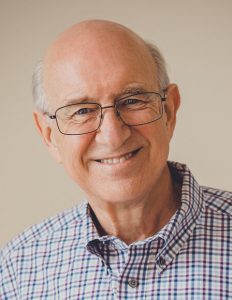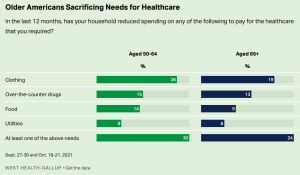The stress aging Americans are experiencing due to constantly rising health care costs is accelerating at an alarming pace, new polling shows.
“More than a third of adults 65 and older (37%) are concerned they will not be able to pay for needed health care services in the next year,” according to the recent survey by West Health-Gallup. “The situation is even worse for older Americans who are not yet eligible for Medicare, with nearly half (45%) of adults aged 50 to 64 reporting the same concern level. This puts nearly 50 million adults aged 50 and older at risk for more severe illness and even death due to the cost of health care.”

But many seniors are reluctant to admit these struggles to their friends and church families, said Greg Smith, executive director of the Legacy Ministry for Older Adults at First Baptist Church of Decatur, Ga.
“Often, they will not talk about it because many of the oldest are Depression babies, so they just don’t complain,” he said. “They recognize financial hardship as just a given in life.”

Greg Smith
It’s therefore incumbent on congregations and ministries to ask questions ask about food insecurity or chronic health issues when visiting the elderly, Smith said. “The key is for churches to recognize the hidden financial hardships of older adults and not to assume the challenge is limited to the homeless.”
The West Health-Gallup poll found such predicaments are mushrooming rapidly.
“The health problems Americans start facing when they reach 50 years of age are compounded when the high cost of health care prevents them from seeking treatment, taking their prescriptions or leading an otherwise healthy lifestyle,” the study’s authors noted.
At least two-thirds of older Americans find medical costs to represent some level of financial difficulty.
The survey reported that at least two-thirds of older Americans find medical costs to represent some level of financial difficulty. “When looking at inability to pay for care, four in 10 report they are concerned; smaller but notable percentages are not seeking treatment, are skipping prescribed medicine or cutting back on basic needs such as food and utilities to pay for health care.”
The problems are especially challenging to Americans ages 50 to 64 because they do not qualify for Medicare, although older adults also are significantly affected, the report added.
“U.S. Department of Health and Human Services data show that out-of-pocket health care expenses for adults 65 and older rose 41% from 2009 to 2019; out-of-pocket expenses take up a greater proportion of individuals’ expenditures as they age, because of an increase in demand for health services and the reality that Medicare does not cover all health expenses. People 65 and older spend nearly twice as much of their total expenditures on health care costs when compared with the general population, even with 94% in this age group being covered by Medicare.”

The numbers of people affected are expected to grow as the aging population increases by about 10,000 people a day during the next decade, according to U.S. Census calculations. “This rapidly growing group of older Americans … is already saying health care costs are a financial burden (24% of those 50 to 64 call it a major burden; 48%, a minor burden),” the report said.
To compensate, seniors reported cutting back on other expenses in an attempt to address their health care needs.
“In the past year, about one in four adults aged 65 and older, approximately 13 million people in this age group, cut back on at least one basic need to pay for health care. This group includes 9% who reduced spending on food, 13% who decreased spending on over-the-counter drugs, 6% who cut back on utilities and 19% on clothing.”
The study included comments from survey participants like New Mexico resident Arthur Falconer, 78, who said: “When I go to see a doctor, it costs $20, (which) may not seem like much to everybody, but my wife and I are retired, and we have a grand total of $126 left a month for gas, emergencies and food. We end up having to get food at the church food banks.”
“When I go to see a doctor, it costs $20, (which) may not seem like much to everybody, but my wife and I are retired, and we have a grand total of $126 left a month for gas, emergencies and food.”
Exacerbating the dilemma for older Americans is the worry that comes with it, the study said. “These costs are also associated with stress, which can make health issues even worse: Over four in 10 adults aged 65+ (42%) report that health care costs cause stress in their daily lives.”
Smith suggested several actions churches can take to help alleviate that stress for seniors.
“Have a food bank or become involved in food cooperatives,” he advised. “For many seniors, if healthy food is provided and their utilities are provided, then you are supporting good health.”
Some churches have found benefit in parish nursing, he added. “Such a ministry can have a single nurse or maybe a team of nurses available to meet the basic health care needs” of congregation and community members, including the elderly.
“Another approach is to offer a transportation ministry. Transportation can be a huge problem with older adults. This can provide rides to doctor appointments or going to the drug store to pick up prescriptions for someone. Particularly for the homebound, part of their health care problems may simply be that they are homebound and cannot get to a doctor on a regular basis.”
Related articles:
Faith community nurses ‘carry the hope’ during COVID-19 pandemic
As the American population grows older, church ministries need to shift | Analysis by Mark Wingfield


